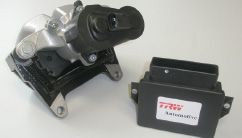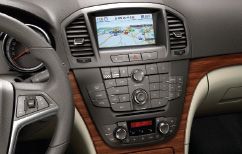MATLAB and Simulink in the World - Model-Based Design
Model-Based Design is enabling engineers worldwide to create increasingly complex systems within shrinking schedules. Across industries, engineers have cut development time by 50% or more by placing a system model at the core of the development process and using it to simulate and verify designs, create virtual prototypes, and generate production code.
Epson Toyocom
Reducing hardware prototypes: modeling and simulating mixed-signal devices
As more functionality is packed onto ever smaller consumer electronics devices, manufacturers are turning to mixed-signal devices to achieve stability and precision at high frequencies. Epson Toyocom used Model-Based Design to develop a 16-bit delta-sigma analog-to-digital converter for a mixed-signal integrated circuit. Modeling and simulation in Simulink® enabled Epson Toyocom to make informed design decisions, verify their design early in development, and reduce the number of hardware prototypes, helping them complete the project within a two-month deadline and saving the company millions of dollars.
ABB
Improving power electronics performance: simulating controllers and power systems

Combining a powerful CPU with a large FPGA, ABB’s AC 800PEC power electronic controller regulates high-power rectifiers, frequency converters for turbines, battery energy storage systems, and other power electronic applications. After designing control algorithms for the AC 800PEC in MATLAB®, Simulink, and Stateflow®, ABB engineers validated the algorithms by running system simulations with SimPowerSystems™. They used Simulink Coder™ to generate almost 100% of the C code for the controller directly from their Simulink models.
Océ
Ensuring design feasibility before implementation: developing real-time prototypes

Direct Imaging (DI) is a unique printing process developed by Océ for black-and-white and full color. In a single pass, monocolor images generated by seven drums, each with 5000 tracks, are combined to generate full-color prints. Océ R&D engineers built a demonstrator that makes it possible to align the tracks of all seven drums to within 20 microns of each other. The engineers used Simulink and Stateflow to design, model, and simulate data acquisition, control logic, and actuation subsystems. Simulink Coder was used to create the control algorithms for the real-time xPC Target™ prototype.
TRW
Verifying designs early in development: generating tests for complete model coverage

TRW Automotive developed an innovative electric parking brake that eliminates the need for a lever or pedal, integrates with the vehicle’s stability control systems, and engages or disengages based on commands from the vehicle’s onboard computers. TRW engineers modeled and simulated the brake’s control system in Simulink and Stateflow. Test vectors generated with Simulink Design Verifier™ enabled them to use simulation to verify the design in the first phases of development and achieve 100% coverage of their control system models. The brake is certified for the IEC 61508 functional safety standard.
General Motors Engineering Europe
Accelerating control system development: generating production code

GM Engineering Europe’s embedded HVAC control system calculates air temperature throughout a vehicle’s interior by simulating, in real time, the effects of ambient temperature, sun load, heat-transfer mechanisms, convection, air flow, and heat radiation. The engineers created a model framework for the controller, performed system-level simulations, and generated code for prototyping that was ultimately deployed on production hardware. Model-Based Design accelerated development and enabled the team to validate their designs and test components under various failure conditions before hardware was available.
Lockheed Martin
Developing space-qualified communications systems: cutting FPGA development time

Engineers at Lockheed Martin Space Systems developed a dual-stage, satellite-based channelizer, or bent pipe transponder, that can move bandwidth on demand between users and locations. Designed and tested using Model-Based Design, the channelizer was implemented on FPGAs, enabling it to be updated after launch. After modeling and simulating the channelizer, the engineers used HDL Verifier™ and Mentor Graphics® ModelSim® to verify, analyze, and visualize the VHDL implementation in Simulink, reducing verification time by 90%.
Published 2011 - 91952v00